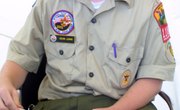Getting students to cooperate, see each other as equals and work with every class member, rather than just their friends, is a challenge at any age level, but is especially so in the primary grades when norms are still being established. Teachers can use team builders in their classroom to create a sense of community in which everyone is valued, and understands that they are expected to participate fully and equally.
Zig Zag Zop
Everyone should stand shoulder to shoulder in a circle, facing the center of the group. Make sure the circle is not too tight; participants need to be able to move, but the circle should be well formed so everyone is visible. One person will begin the activity by saying, "zig" and making eye contact with another member of the group. That person now says “zag” while making eye contact with a third person. The third participant says “zop” and points to a final participant. The person pointed at then becomes the “zig” of a new round and cannot select anyone from the previous round. If a member of the new round selects someone who was in the round just previous to theirs, they are out. If a “zig” or “zag” points, they are out. If a “zop” fails to point, they are out. When a student is out, they return to their desk, and the circle shrinks a little. To make it more advanced, speed up the pace. Students then become “out” if they hesitate too long before reacting.
Ants in a Line
In this game students pretend to be aunts, moving pebbles away from their anthill or bringing food to it. Have students try to move the balls away from or toward the space designated as the “anthill” multiple ways, including by themselves, in an assembly line, and any other way you might suggest, or they develop as a hypothesis. Afterwards talk about which ways worked the best and why teamwork was better than working alone.
Story Builders
Cut comic strips apart so that each frame of the strip is an individual square. Or cut apart a paragraph into single sentences. Have a group of students draw sentences at random, and then as a team, without showing others their picture or reading them their sentence, put the comic strip or paragraph back in order.
Laps
Have students sit in a circle of chairs. Starting with a student who is sitting in a designated seat, have them give a command that tells how far to move if a certain statement is true for them as well as true for the person in that chair. For example: Move three chairs to the right if your favorite color is blue. Everyone whose favorite color is blue then moves three chairs to the right. If someone is sitting in the seat they arrive at, they should sit on their laps. If this is not possible or not comfortable, they can sit on the floor behind their chair. The new person in the designated chair repeats this process. If no one is in the designated chair, the next person to the right selects it. Play continues as long as time allows.
Related Articles
References
Writer Bio
Misty Barton has been working in the fields of composition and journalism for over 10 years. She has a Bachelor of Science in English education and a Master of Arts in English and composition. She has written for various online publications including a blog that specifically addresses the concerns of work-at-home mothers.











